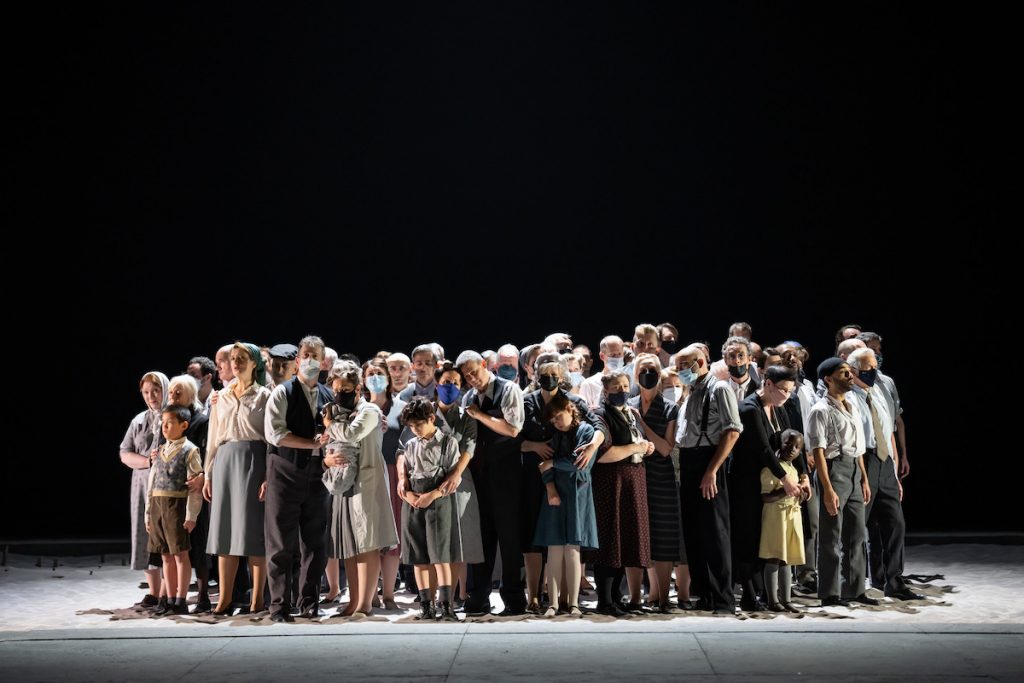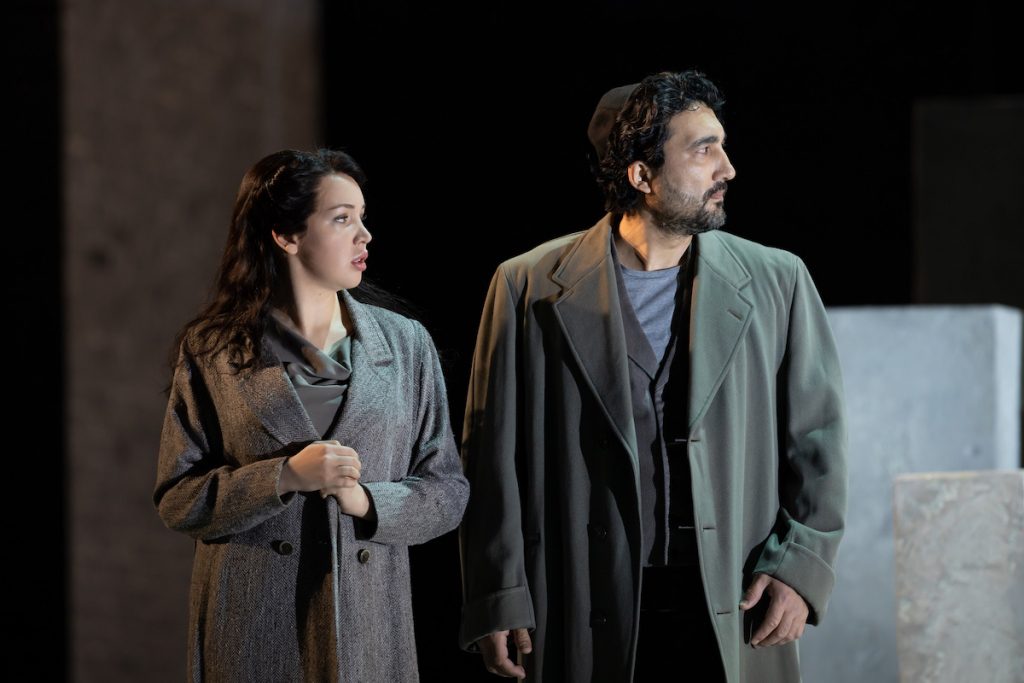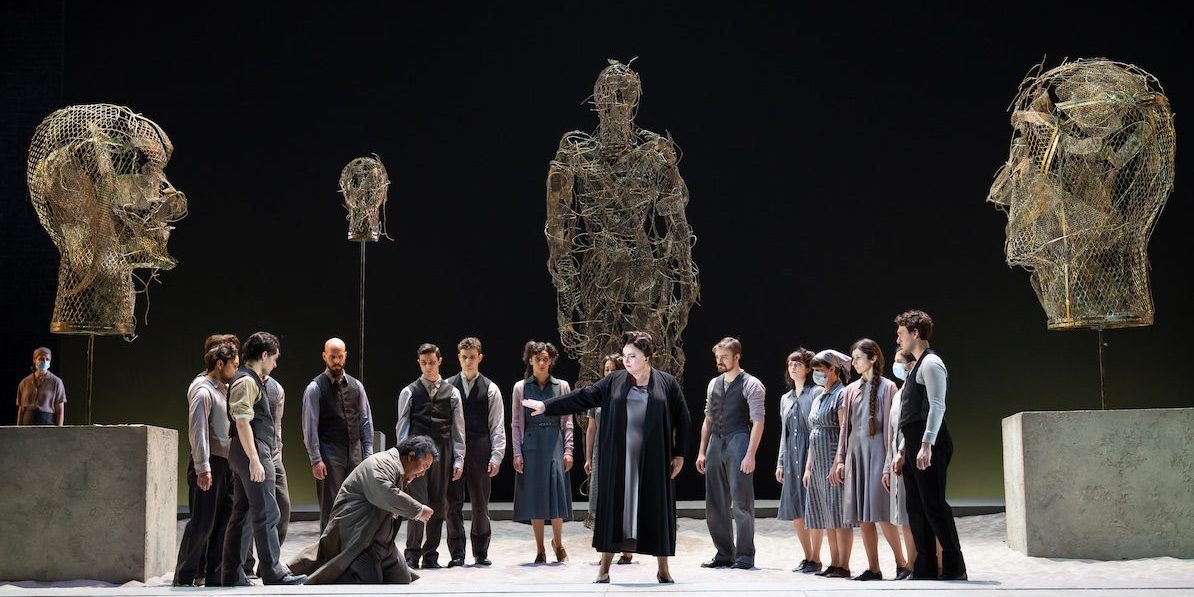This opera was Verdi’s breakthrough work in 1842, setting the pattern for many of his preoccupations and emphases in the decades to come. It explores moral dilemmas and impossible choices, and the temptations and deceptions of power. The plot focuses on the fate of the Jews after the sack of Jerusalem and the rivalry between the two daughters of their conqueror, Nabucco. At the point of conquest, a moment of hubris leads him to proclaim himself a god, for which he is punished by madness. His scheming daughter Abigaille seizes power and arranges for the execution of the Jews and of her sister, Fenena, who has converted to Judaism to join her lover Ismaele. When all seems lost, Nabucco’s prayer to Jehovah restores his sanity, and as a result, broader order is reinstated and Abigaille kills herself.

The plot is at points imperfect, with questions of motivation left unexplained, and the love interest between Fenena and Ismaele left underdeveloped. But the lead roles are all finely characterised and above all the chorus embodying the enslaved Jewish people is splendidly and movingly realised, most notably in the famous chorus of exile, ‘Va pensiero’, which became a leading anthem in the history of Italian unification. This episode is exquisitely rendered in this production as the chorus huddle awaiting apparent doom under a single spotlight. Despite having to wear masks the dynamics and projection of the many choral episodes were unimpaired and Simona Bucci, the movement director, deserves high praise for keeping the crowds of Jews and Babylonians swirling credibly throughout.

In the title role Amartuvshin Enkhbat has relatively little to do early on but really comes into his after madness descends – and his prayer aria in the final act was a highlight of poised concentration in the opera house. The bravura episodes reside with his daughter Abigaille, the villain of the piece, thus reversing the usual father-daughter polarities in Verdi. Despite some squally moments, Liudmyla Monastyrska was very much inside the role, finding points of reflective repose as well as fierce majestic disdain. She was well-matched by the defiant Jewish high priest of Alexander Vinogradov, and Vasilisa Berzhanskaya and Najmiddin Mavlyanov took the limited opportunities available to them as Fenena and Ismaele.

In the pit Daniel Oren found all the brassy swagger needed for the martial and triumphal sequences, including some excellent off-stage acoustics, and coaxed some tender woodwind and cello solos from the orchestra’s principals. He also found a fine balance in the many scenes where the weight of the chorus alternates with a quieter quartet of characters developing their own thoughts and feelings. Already you can hear hints of mature Verdi even though the overall structure remains in keeping with the world of Bellini and Donizetti.
This production revives one first seen in 2013. Director Daniele Abbado and designer Alison Chitty choose to locate the production in the world of the Holocaust. The chorus appears dressed for the 1940s, with children carrying books tied up with string, as if on the verge of deportation to labour camps. Stone monoliths stand in a sandpit intended to evoke the Temple in Jerusalem, but also reminiscent of the Holocaust Memorial in Berlin. Later the stage is dominated by huge wire representations of monarchs and idols. All these points are well made and give the audience much food for thought, but in such a colourful and dramatic piece it seems a shame that the whole evening remains in such drab sepia tones throughout without any variation. Yes, privation and despotic cruelty are very relevant here, but unremitting austerity does not necessarily follow. The concept is given a higher priority apparently than dramatic flexibility and suppleness.
Before the overture, Oliver Mears came out to thank the Covent Garden audience for their loyalty on the first night, and we can only return our appreciation in these dark times for the inspiration of this stimulating and moving music-making.

